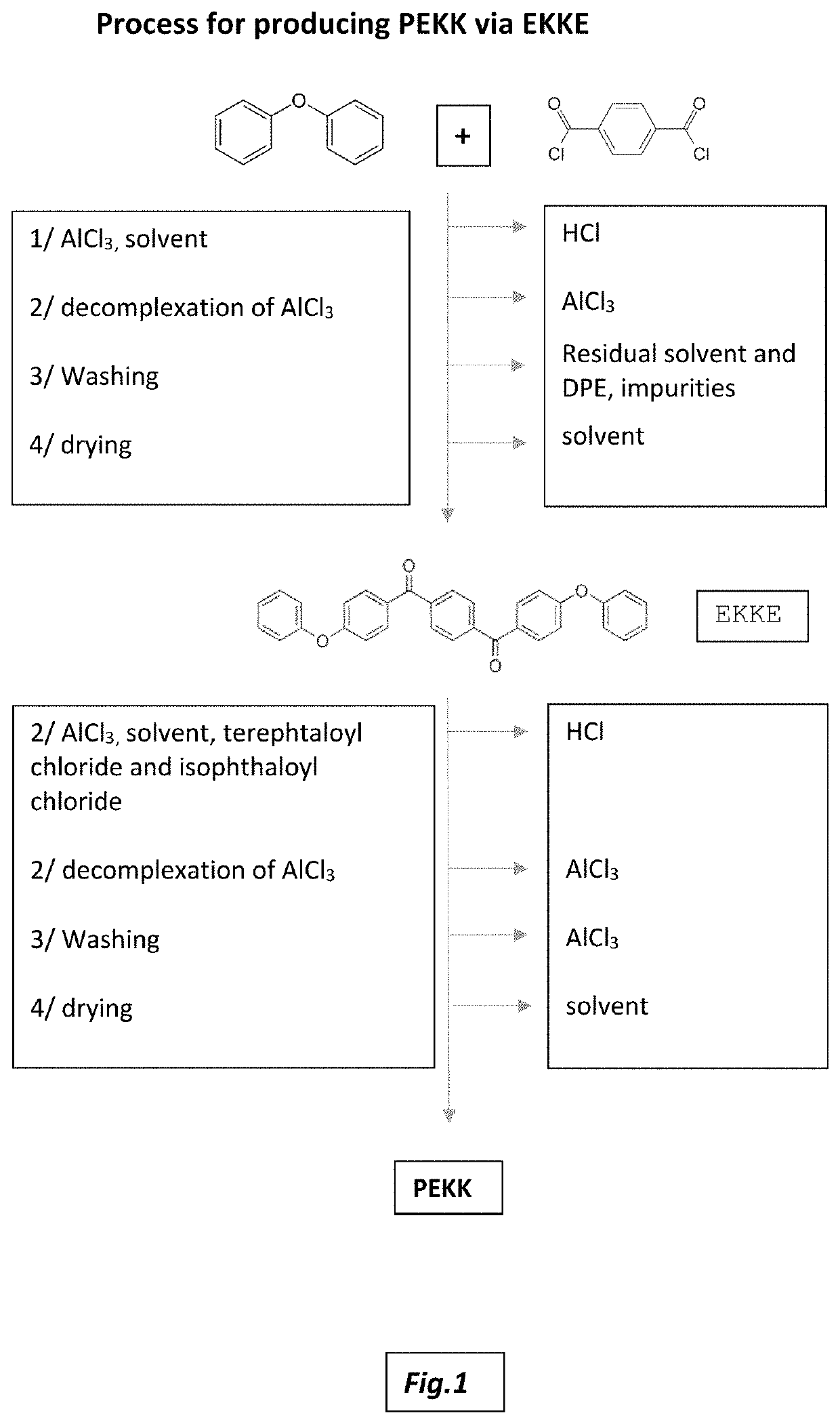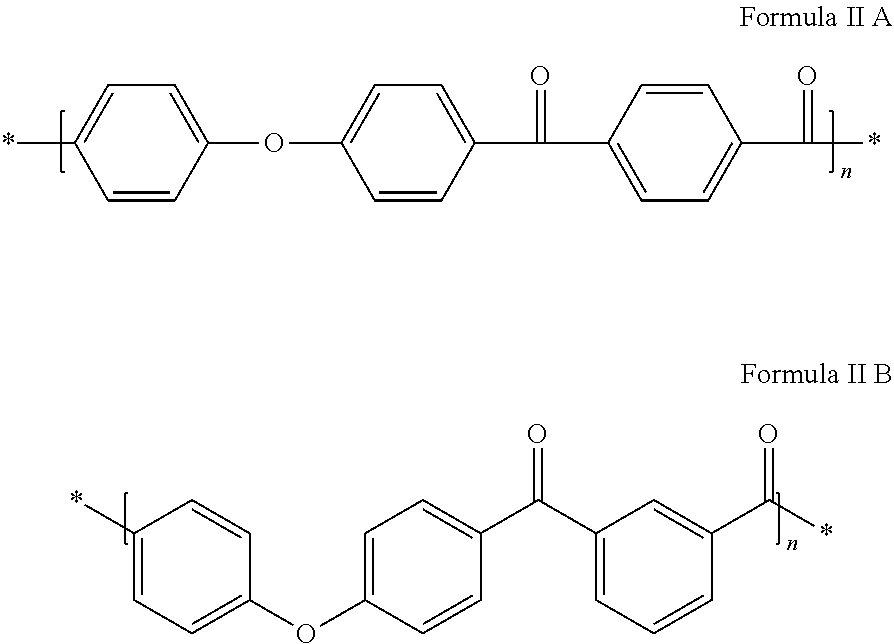Process for producing polyether ketone ketone
a technology of ketone ketone and polyether, which is applied in the field of electrophilic substitution of polyether ketone ketone polymers, can solve the problems of restricting purification steps, limiting the production of by-products, and reducing the cost-efficiency and environmental impact of the process
- Summary
- Abstract
- Description
- Claims
- Application Information
AI Technical Summary
Benefits of technology
Problems solved by technology
Method used
Image
Examples
embodiments
[0211]1. A method for the manufacture of polyether ketone ketone (PEKK), comprising:[0212](i) providing a 1,4-bis(4-phenoxybenzoyl)benzene-Lewis acid complex;[0213](ii) purifying said 1,4-bis(4-phenoxybenzoyl)benzene-Lewis acid complex;[0214](iii) reacting said 1,4-bis(4-phenoxybenzoyl)benzene-Lewis acid complex with at least one difunctional aromatic acyl chloride in a reaction solvent and optional additional Lewis acid to obtain a product mixture comprising a PEKK-Lewis acid complex; and[0215](iv) decomplexing the PEKK-Lewis acid complex to obtain a PEKK polymer.[0216]2. The method of embodiment 1, wherein step (i) comprises:[0217](a) providing a reactant mixture comprising terephthaloyl chloride and diphenyl ether in a reaction solvent;[0218](b) adding a Lewis acid to the reactant mixture, so as to obtain a product mixture comprising 1,4-bis(4-phenoxybenzoyl)benzene-Lewis acid complex.[0219]3. The method of any embodiments 1 to 2, wherein the 1,4-bis(4-phenoxybenzoyl)benzene-Lewi...
PUM
| Property | Measurement | Unit |
|---|---|---|
| yield | aaaaa | aaaaa |
| yield | aaaaa | aaaaa |
| yield | aaaaa | aaaaa |
Abstract
Description
Claims
Application Information
 Login to View More
Login to View More - R&D
- Intellectual Property
- Life Sciences
- Materials
- Tech Scout
- Unparalleled Data Quality
- Higher Quality Content
- 60% Fewer Hallucinations
Browse by: Latest US Patents, China's latest patents, Technical Efficacy Thesaurus, Application Domain, Technology Topic, Popular Technical Reports.
© 2025 PatSnap. All rights reserved.Legal|Privacy policy|Modern Slavery Act Transparency Statement|Sitemap|About US| Contact US: help@patsnap.com



